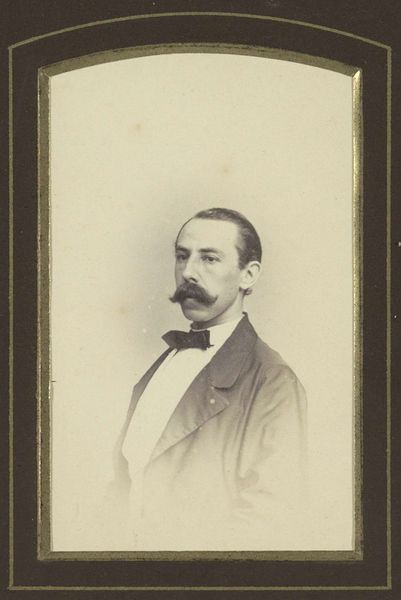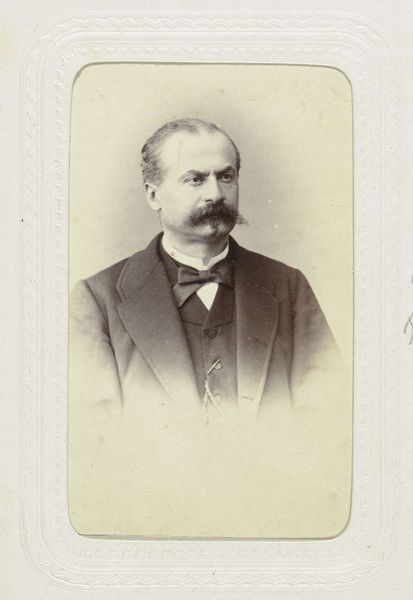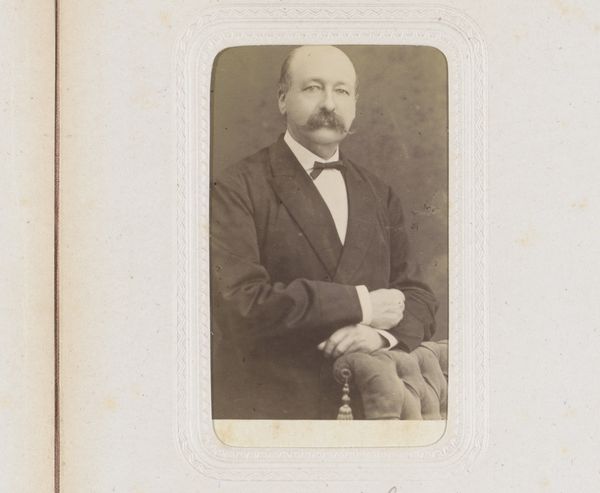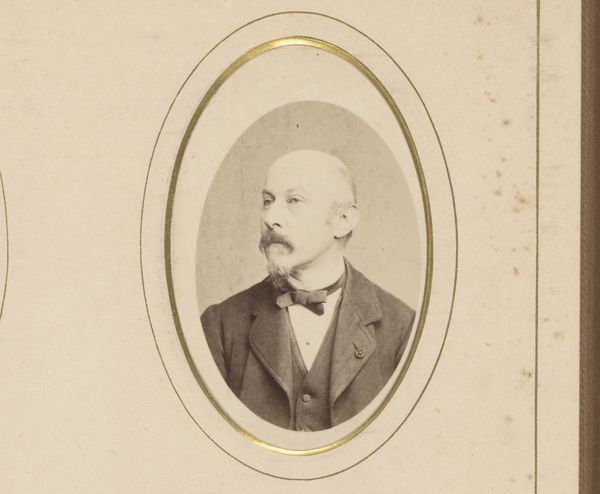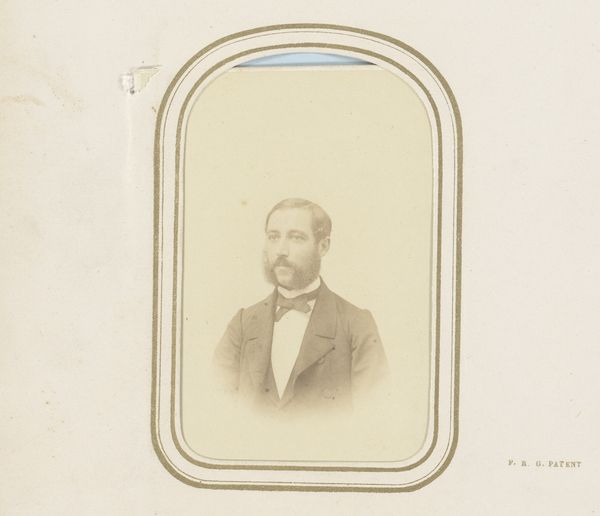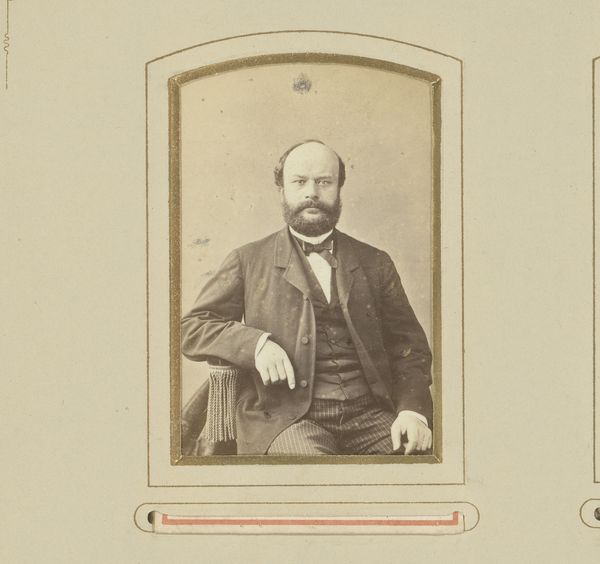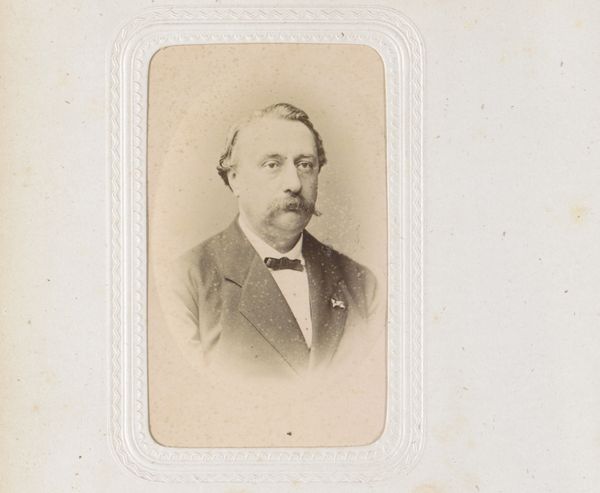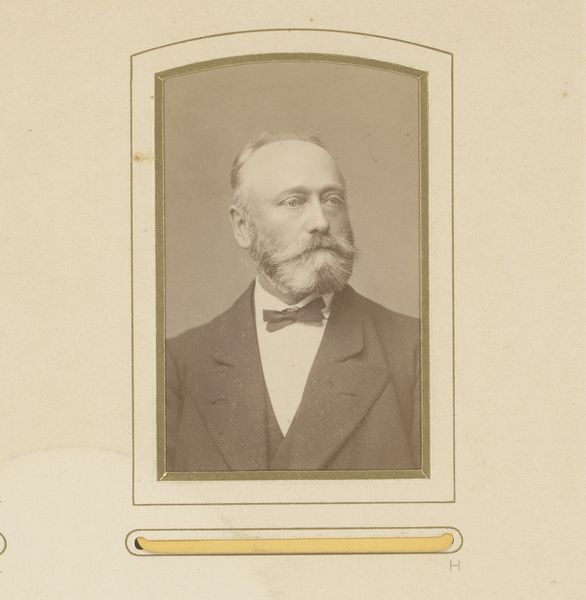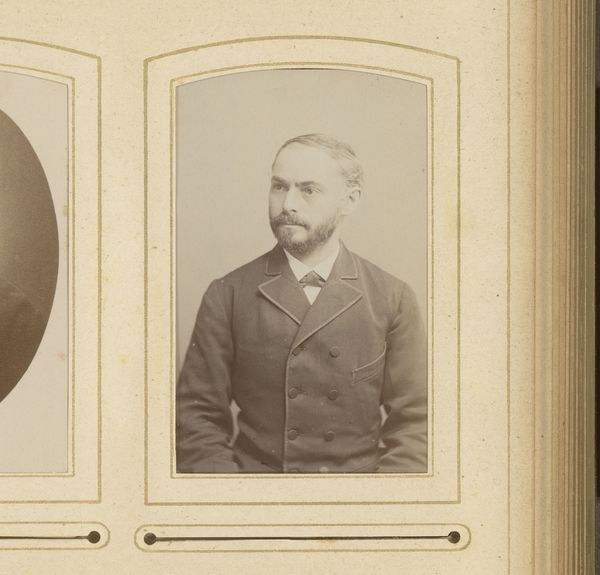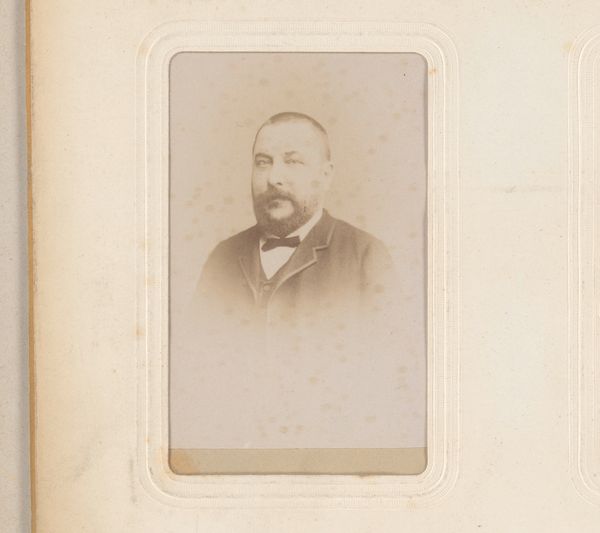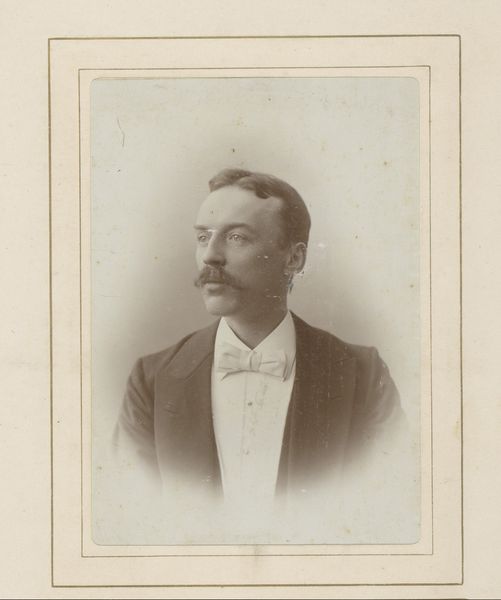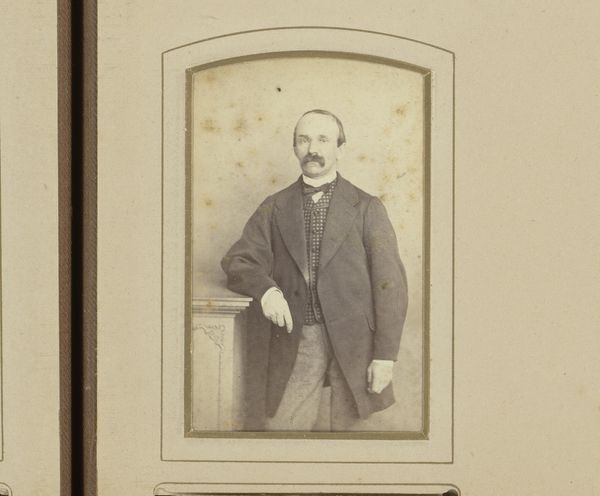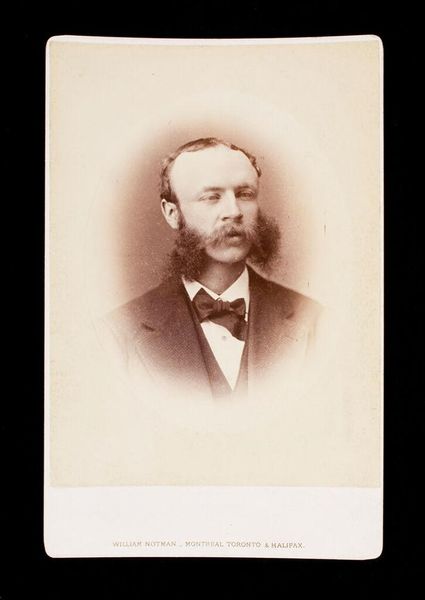
Studioportret van een man met een snor, gekleed in een donker pak c. 1863 - 1866
0:00
0:00
abdullahfreres
Rijksmuseum
photography, gelatin-silver-print
#
portrait
#
archive photography
#
photography
#
historical photography
#
portrait reference
#
gelatin-silver-print
#
realism
Dimensions: height 80 mm, width 54 mm, height 296 mm, width 225 mm
Copyright: Rijks Museum: Open Domain
Curator: Looking at this portrait, I am struck by the man's reserved confidence. It's a gelatin-silver print from around 1863-1866 by Abdullah Frères, titled "Studioportret van een man met een snor, gekleed in een donker pak." Or, "Studio portrait of a man with a moustache, dressed in a dark suit." The photograph now resides in the Rijksmuseum collection. Editor: The tonality is rather muted, isn't it? There’s an undeniable emphasis on form, highlighted by the stark lighting and the controlled composition. The texture of the moustache really contrasts with the smoother backdrop. Curator: Absolutely. Understanding this image necessitates situating it within the burgeoning context of studio portraiture. This man, consciously or not, participated in constructing a public image aligned with the bourgeois ideals of the period. The moustache itself speaks volumes about his aspirations and self-perception, reflecting evolving masculinities. Editor: But that assumes a fixed symbolism of the moustache. Surely, it is, more fundamentally, a visual signifier. The precise trimming, the symmetry, they denote a certain order and deliberation. Its textural richness, captured by the then-emerging photographic medium, offers an aesthetic pleasure in itself. Curator: That reading abstracts it, I think. We need to examine power relations. Consider who had access to photographic studios at the time. This portrait embodies a particular narrative—one often excluding marginalized voices and perspectives. We can analyze it through Foucault's ideas around panopticism, in that, like many formal portraits, the man knows he is watched, scrutinized. Editor: But to only view it as a document of power negates the photograph’s materiality. Consider the geometric patterning of the bow tie and jacket—a sharp contrast against the man’s facial curves. Curator: Those patterns are interesting, because even his choice in clothing speaks volumes. We see an aspiration to social mobility. He is aware of himself. Editor: I think what captivates me is the formal harmony between the light reflecting off the side of his head and the dark material of his suit. It shows mastery of tone and light on behalf of the photographer. Curator: And it all points toward how clothing was itself performative—used to affirm or negotiate complex social dynamics in the mid-19th century. Thank you, for helping me reframe how I was viewing this piece. Editor: And likewise, examining the artwork using a critical theory lens reminds me not to disregard the social implications behind visual form.
Comments
No comments
Be the first to comment and join the conversation on the ultimate creative platform.
